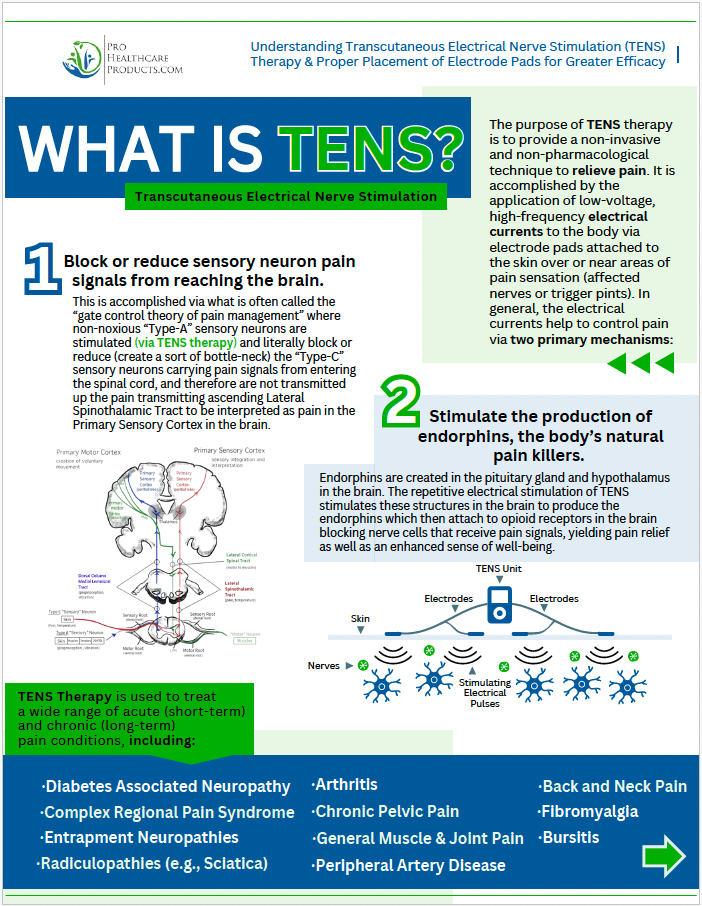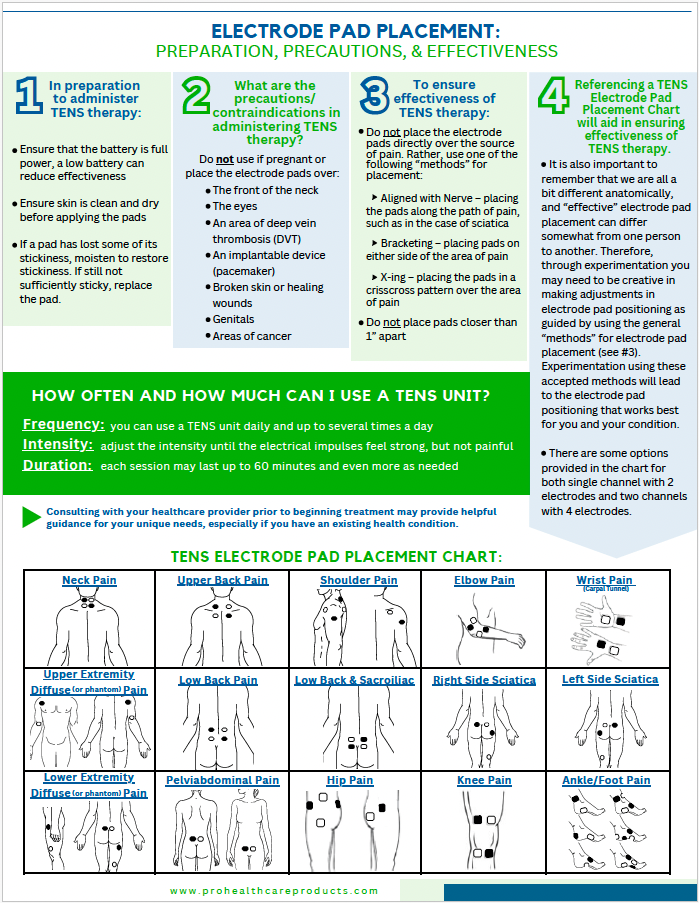 10th Nov 2021
10th Nov 2021
What is the Difference Between Transcutaneous Electrical Nerve Stimulation (TENS) and Microcurrent Electrical Nerve Stimulation (MENS)
Both TENS and MENS are therapeutic modalities used to modulate and reduce nerve, muscle, or joint pain associated with a variety of ailments by the electrical stimulation of a nerve. The various theories as to how the stimulation of nerve reduces pain are:
TENS: The leading theories of how TENS reduces pain are:
oThe Gate Control Theory Pain Management: This involves blocking the transmission of pain signals at the entrance to the spinal cord through the continuous application of high frequency electrical current to create a vibration sensation which activates Type A sensory neurons. The signals from the Type A sensory neurons overwhelm and impede the pain signals coming in from the Type C sensory neurons and creates a “bottle neck” of incoming signals at the dorsal root into the spinal cord, limiting the amount of incoming pain signals. (Click HERE to read our article “Pain Management and the Use of a TENS Unit”)
oThe Endogenous Release of Endorphins: Electrical stimulation causes a release of morphine-like substances that interact with the opiate receptors in the brain effectively reducing the perception of pain and does so without the risk of addiction to or dependence on opiate drugs.
oAutomatic and Involuntary Muscle Contraction: Electrical stimulation causes the contraction and relaxation of muscles and can reduce muscle spasm and the associated pain it can produce as well as increasing blood flow to the tissues bringing the healing elements of oxygen and nutrients.
MENS: The theory of how MENS reduces pain and aids in tissue repair are:
oThe Principle of the Arndt-Schulz Law: The application of a subthreshold electrical signal to produce a physiological response of restoring the normal course of electric current flow that is thought to be disrupted in injured tissues. The realignment of the normal electric current flow through body tissues is believed to reduce pain and aid in faster tissue repair and recovery from injury.
Using TENS an MENS in the Treatment of Pain and to Speed Healing of Damaged Tissues
Both TENS and MENS have proven helpful in reducing pain and improving functional capabilities of acute and chronic injured tissues. Both modalities are noninvasive, produce negligible side effects, are easy to use and provide an effective tool in combating pain. Further, they can be used continually for long periods of time, including when exercising or during activities that might prove painful under conditions of injury and healing. As such, these pain reducing devices should be considered as first line of treatment in patients with acute and chronic pain. Specific conditions for which TENS and MENS has been studied and found effective in reducing pain include:
- Temporomandibular Pain Syndrome
- Osteoarthritis
- Tendinitis
- Bursitis
- Neck and Low Back Pain
- Chronic Pelvic Pain
- Menstruation Pain
- Diabetic Peripheral Neuropathy
- Fibromyalgia
Is MENS an Effective Cosmetic Facial Treatment?
Most associate facial cosmetic treatments with beneficial effects rendered to the skin, mostly to lift and firm, reduce, or eliminate wrinkles. In some circles, MENS it is being touted as an effective cosmetic treatment. However, those in the medical field, especially plastic and reconstructive surgeons, have made statements that they do not believe electrical stimulation will have any effect on the skin/dermis or associated fat, but state there could theoretically be improvements in facial muscle tone and therefore may play a part in treatment. Further, a review of studies looking at the effects of electro-stimulation alone or combined with other therapies in the treatment of facial paralysis (Bell’s Palsy) concluded that “there were no major benefits than conventional treatments for Bell’s paralysis.”
However, regardless of the lack of scientific evidence to demonstrate its effectiveness as a cosmetic treatment, the use of micro-stimulation for cosmetic purposes is a growing business touting both the cosmetic appearance benefits and the relaxing effects of the applied electrical current.
When Not to Use TENS or MENS
Because the application of these modalities is intended to stimulate nerves at or near the site of injury/pain, there are some conditions or body areas where they should note be applied. They are:
- Over a pregnant uterus. Do not apply over the abdomen, pelvic area, or lower back during pregnancy.
- Over implantable devices. Do not apply over or close to areas where an electronic device is implanted (defibrillator, neurostimulator bone growth stimulator, pacemaker, etc.).
- Over cancer areas. Do not apply over areas of known cancer because of the risk to potentially spread the cancer cell through enhanced blood blow.
- Epilepsy. Do not apply electrodes to the areas of the head, neck, or shoulders as it may pose a risk for causing a seizure.
- Deep Vein Thrombosis. Do not apply over an area of suspected or known DVT as the increased blood flow produced by these modalities can increase blood circulation and may contribute to the risk of dislodging the blood clot.
- Heart Disease. Do not apply to patients with known heart disease, heart failure, or arrhythmias as it may adversely affect these disease state conditions.
Being nonpharmacological, the use of these modalities for pain management poses no risk for addiction, and when combined with the healing effects of exercise or movement, these therapeutic interventions provide a way to help alleviate pain while continuing to participate in activities of daily living and other forms of movement.
Contact your therapist for information about these modalities and their ability to help manage pain without the side effects of pharmacological interventions.
|
|
|
Lynn Perkes is a full-time faculty member at Brigham Young University-Idaho teaching courses in Kinesiology and Biomechanics, Applied Kinesiology and Assessment, Therapeutic Exercise, and other Physical Therapist Assistant classes. He writes part-time for ProhealthcareProducts.com, who sells healthcare, medical, therapy, fitness, and personal protective equipment and supplies.







